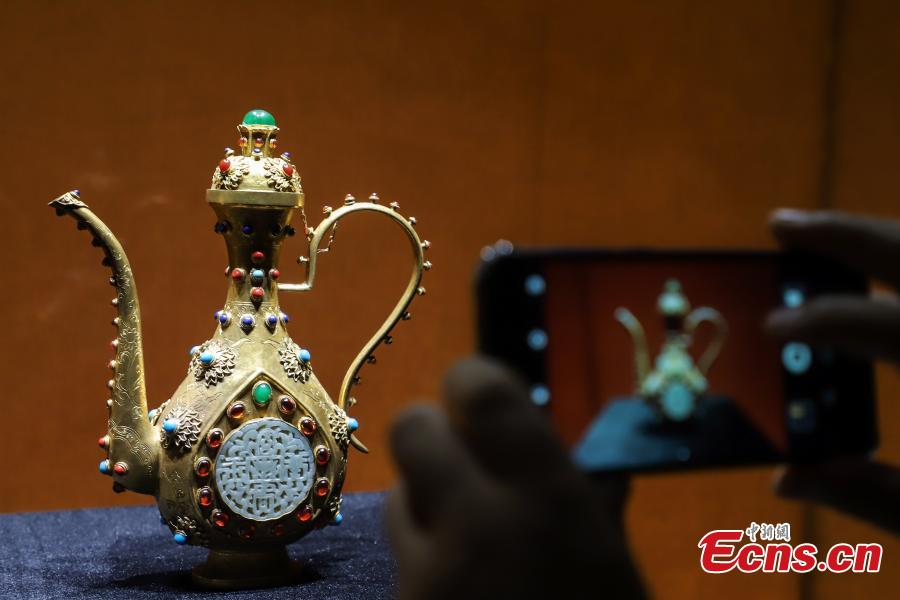
Cultural relics on display at the Wulian Museum in Dushan County, Southwest China's Guizhou Province. The museum opened on August 8 and currently, in its first phase, has more than 1,300 relics on display. Included among its treasures are items made from bronze, ceramics, gold and silver from the Tang, Ming and Qing dynasties. Wulian was the name of a county during the Western Han Dynasty (206 BC?220 AD) and is located near the seat of today's Dushan County. (Photo: China News Service/Qu Honglun)

Cultural relics on display at the Wulian Museum in Dushan County, Southwest China's Guizhou Province. The museum opened on August 8 and currently, in its first phase, has more than 1,300 relics on display. Included among its treasures are items made from bronze, ceramics, gold and silver from the Tang, Ming and Qing dynasties. Wulian was the name of a county during the Western Han Dynasty (206 BC?220 AD) and is located near the seat of today's Dushan County. (Photo: China News Service/Qu Honglun)

Cultural relics on display at the Wulian Museum in Dushan County, Southwest China's Guizhou Province. The museum opened on August 8 and currently, in its first phase, has more than 1,300 relics on display. Included among its treasures are items made from bronze, ceramics, gold and silver from the Tang, Ming and Qing dynasties. Wulian was the name of a county during the Western Han Dynasty (206 BC?220 AD) and is located near the seat of today's Dushan County. (Photo: China News Service/Qu Honglun)

Cultural relics on display at the Wulian Museum in Dushan County, Southwest China's Guizhou Province. The museum opened on August 8 and currently, in its first phase, has more than 1,300 relics on display. Included among its treasures are items made from bronze, ceramics, gold and silver from the Tang, Ming and Qing dynasties. Wulian was the name of a county during the Western Han Dynasty (206 BC?220 AD) and is located near the seat of today's Dushan County. (Photo: China News Service/Qu Honglun)

Cultural relics on display at the Wulian Museum in Dushan County, Southwest China's Guizhou Province. The museum opened on August 8 and currently, in its first phase, has more than 1,300 relics on display. Included among its treasures are items made from bronze, ceramics, gold and silver from the Tang, Ming and Qing dynasties. Wulian was the name of a county during the Western Han Dynasty (206 BC?220 AD) and is located near the seat of today's Dushan County. (Photo: China News Service/Qu Honglun)

Cultural relics on display at the Wulian Museum in Dushan County, Southwest China's Guizhou Province. The museum opened on August 8 and currently, in its first phase, has more than 1,300 relics on display. Included among its treasures are items made from bronze, ceramics, gold and silver from the Tang, Ming and Qing dynasties. Wulian was the name of a county during the Western Han Dynasty (206 BC?220 AD) and is located near the seat of today's Dushan County. (Photo: China News Service/Qu Honglun)

Cultural relics on display at the Wulian Museum in Dushan County, Southwest China's Guizhou Province. The museum opened on August 8 and currently, in its first phase, has more than 1,300 relics on display. Included among its treasures are items made from bronze, ceramics, gold and silver from the Tang, Ming and Qing dynasties. Wulian was the name of a county during the Western Han Dynasty (206 BC?220 AD) and is located near the seat of today's Dushan County. (Photo: China News Service/Qu Honglun)























